Field recordings and historical recordings by Jan Kruit and Maxim Chapochnikov.
Tonight the sound of chatkhan, the zither of the Khakas
Siberia is rich in diveristy of native peoples and languages, spread across the vast steppe, taiga and tundra. The music by the native peoples of Siberia is just as varied. Today we will listen to the music of Khakas (Chakas), and we will only focus on one instrument – the chatkhan zither. The Khakas, also called the Yenisei Tatars, live in the southern part of Siberia, in the upper water of the river Yenisei, north of the Sayan mountains. The Khakas culture belongs to the cultural area of the nomads of the Sayan-Altai region of southern Siberia. The main belief here is in Tengri (Heaven) and in the many shamanistic gods. The chatkhan is the most beloved instrument of the Khakas, which looks like a reversed trough with strings that stretch over the upper deck. The instrument is used to accompany epic stories and traditional songs and to play tunes on. We are going to listen to recordings of the early 90’s which were made in the Khakas villages.
The musicians present their own interpretation of the traditional material, but also their own compositions.
These recordings were made by Maxim Chapochnikov. They were never released commercially. A small set of copies was made of the cassettes by the North-Asia Institute for distributional purposes during the First Chatkhan Symposium in Khakassia in 1996.
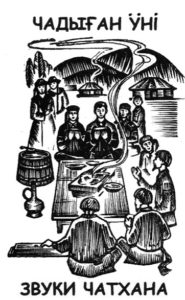
Original cassette cover
Playlist
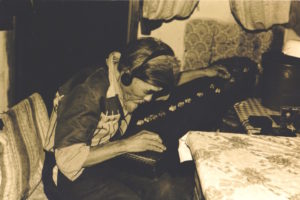
Recording Itpekov (photo M. Chapochnikov)
1 – 6. Itpekov Gregorij (fourteen-string chatkhan)
7 – 9. Samozhikov Alexander (nine-string chatkhan)
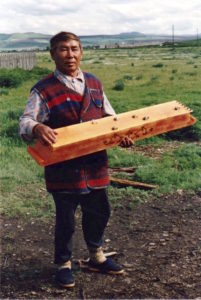
Borgoyakov Pavel (photo M. Chapochnikov)
10 – 11. Borgoyakov Pavel (six-string chatkhan)
12. Sunchugashev Silki (four-string chatkhan)
13 – 17. Pjotr Argudaev (six-string chatkhan)
18 – 24. Konchigashev Nicolai (six-string chatkhan)
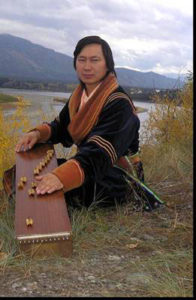
Evgeniy Ulugbashev with his chatkhan
25. Sergey Charkov and Evgeniy Ulugbashev (2 chatkhans by the master Charkov)
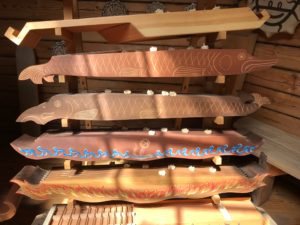
Modern chatkhans made by Sergey Charkov (photo M. Chapochnikov)







